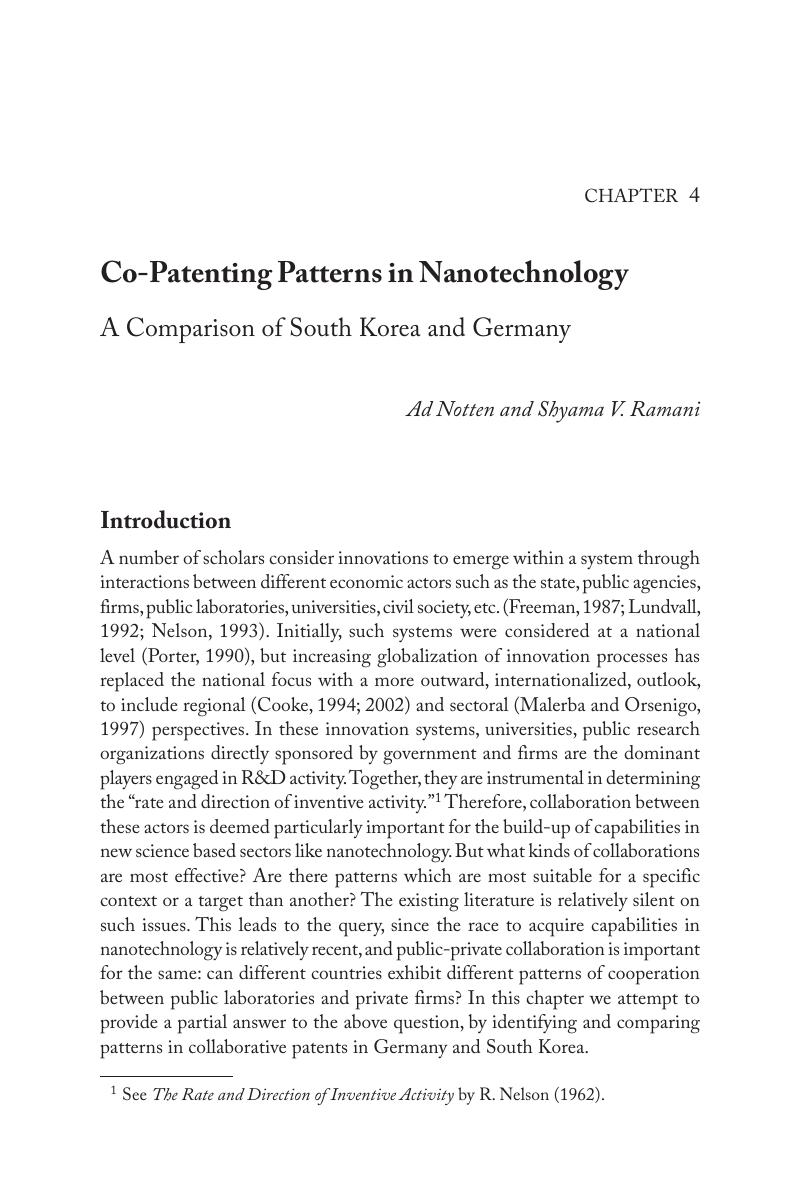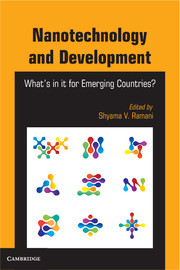Book contents
- Nanotechnology and Development
- Copyright page
- Dedication
- Contents
- List of Figures
- List of Tables
- Acknowledgments
- Part I Introduction to Nanotechnology and Participation of Developing Countries
- Part II Winning and Losing in Nanotech: Case Studies from Developed Countries
- CHAPTER 2 Learning from Solyndra
- CHAPTER 3 How is a Regional Technology Cluster Created?
- CHAPTER 4 Co-Patenting Patterns in Nanotechnology
- Part III Placing Bets on Nanotech: Case Studies of Emerging Countries
- Part IV Conclusions
- Contributors
- Index
- References
CHAPTER 4 - Co-Patenting Patterns in Nanotechnology
A Comparison of South Korea and Germany
from Part II - Winning and Losing in Nanotech: Case Studies from Developed Countries
Published online by Cambridge University Press: 05 June 2014
- Nanotechnology and Development
- Copyright page
- Dedication
- Contents
- List of Figures
- List of Tables
- Acknowledgments
- Part I Introduction to Nanotechnology and Participation of Developing Countries
- Part II Winning and Losing in Nanotech: Case Studies from Developed Countries
- CHAPTER 2 Learning from Solyndra
- CHAPTER 3 How is a Regional Technology Cluster Created?
- CHAPTER 4 Co-Patenting Patterns in Nanotechnology
- Part III Placing Bets on Nanotech: Case Studies of Emerging Countries
- Part IV Conclusions
- Contributors
- Index
- References
Summary

Information
- Type
- Chapter
- Information
- Nanotechnology and DevelopmentWhat's in it for Emerging Countries?, pp. 93 - 114Publisher: Cambridge University PressPrint publication year: 2014
References
Accessibility standard: Unknown
Why this information is here
This section outlines the accessibility features of this content - including support for screen readers, full keyboard navigation and high-contrast display options. This may not be relevant for you.Accessibility Information
- 1
- Cited by
